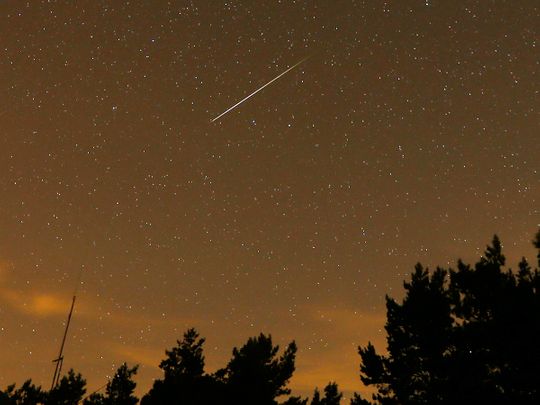
What's that light soaring across the night sky? Is it a satellite? Is it a plane? All of these are possibilities, but if you're looking out at the night sky this Saturday and Sunday, there's a good chance you'll be looking at "shooting stars" from the annual Perseid meteor shower.
The show, which reliably begins in mid-July and concludes at the end of August, will peak Saturday night. Skywatchers, under clear dark skies, can expect to see anywhere from dozens up to 100 meteors an hour, zipping by at 37 miles per second.
"This is one of the three most active in meteor showers - meaning producing the most visible meteors," said NASA ambassador Tony Rice. The other two most prolific meteor showers are the Geminids and the Quadrantids, which peak in December and January - when viewers have to bundle up to watch.
Viewers globally will be able to see the show, but the Northern Hemisphere will have the best seats. The Perseids can be best seen a couple of hours before sunrise, according to Rice. But viewers that don't want to wake up at 3am can also see meteors as early as 10pm, according to NASA.
Known as the best meteor show, according to NASA, the Perseids show up in August when a debris field left by Comet Swift-Tuttle in 1992 barreled past Earth. Tiny particulates, the size of a grit, heat up as they are met by friction from Earth's atmosphere and then begin to light up.
Perseids are known for sometimes creating spectacular fireballs, meteors brighter than Venus, which produce explosive streaks of light that are longer, brighter and more persistent, according to the American Meteor Society.
"You might see some meteors that last a couple of seconds. There will be fewer of them, but they're going to be more spectacular," Rice said.
The Perseids are named for the constellation Perseus - the constellation the meteors appear to come from - but Perseus isn't the source of the meteors. It simply serves as a directional cue. Look to the northeastern part of the sky late at night: If you can't find Perseus, you may also see meteors by looking at dark patches in the sky.
- Patience is key. Rice says you'll need to stay outside for at least 15 minutes while your eyes adjust to the darkness. He recommends staying outside for about an hour to gaze at the meteors in all of their glory.
- Leave your phone inside. Every time you look at your phone, you're going to see fewer meteors. It harms your night vision, Rice said.
Most Perseid meteors are faint, but fortunately moonlight won't wash them out like it does in some years. This weekend, the moon will be but a thin crescent, 10 per cent illuminated.












